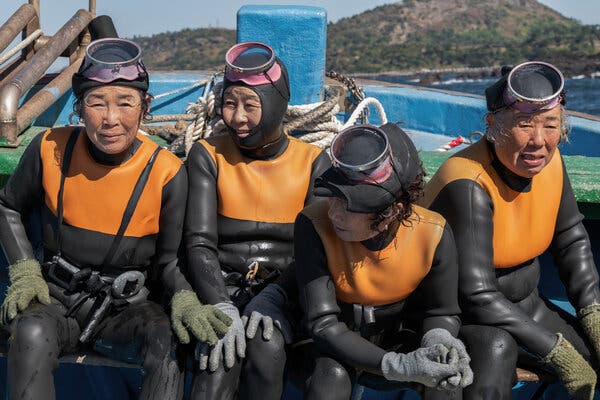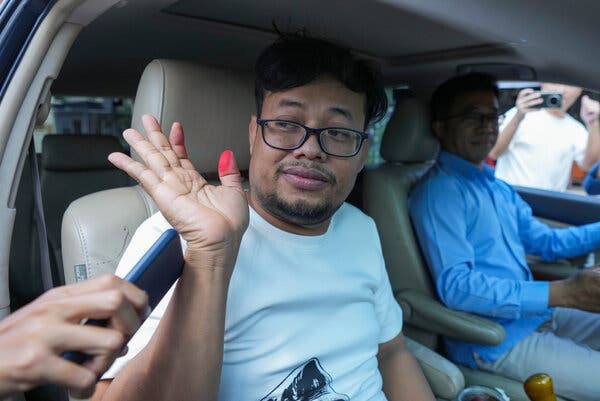Documentary Lens
The film captures the arduous work of South Korean haenyeo, who harvest seafood without diving gear, and whose traditions may be ending.

The Last of the Sea WomenDirected by Sue KimDocumentaryNot Rated1h 27mFind Tickets
When you purchase a ticket for an independently reviewed film through our site, we earn an affiliate commission.
In the South Korean province of Jeju lives a group of women who may, at first, sound as if they’re mythical creatures. The haenyeo (“sea women”) dive and swim in the depths of the ocean without any breathing gear, harvesting seafood like conch, urchin and octopus, which they sell to support their families. Often, haenyeo are the main earners in their households. They’ve done this for centuries.
That is remarkable enough on its own. Free diving — without breathing apparatus other than your own lungs — is incredibly physically demanding and dangerous. Jellyfish and sharks lurk, and bad weather can pose a hazard, too. Some of the haenyeo dive for two full minutes without coming up for air, all while gathering marine life.
But what’s more extraordinary — and what’s explored in “The Last of the Sea Women” (on Apple TV+), directed by Sue Kim — is this astonishing fact: Most of the haenyeo are in their 60s, 70s and 80s. For them, it’s both a point of pride that they’re still doing the work — “men can’t handle this job,” Soon Deok Jang, 72, notes with a grin — and a grave concern.
That is because they have been at this a long time. Yet in recent decades, their numbers have dwindled from tens of thousands to about 4,000. Few young women join the community anymore, and the divers worry that their way of life is disappearing. “I feel like the haenyeo culture is melting away,” one says, referring not only their work, but also their camaraderie and empowerment.
Kim takes a lightly ethnographic approach, melding an observational eye with conversations with the women. She follows the haenyeo into the sea, hangs out with them as they wait at the crack of dawn for transportation to the water and attends meetings where they discuss how to preserve haenyeo culture.
And, as the film shows, there are a few encouraging signs. There’s a school for new haenyeo, though the grueling demands of yearlong training and the work itself mean only about 5 percent of graduates continue on. The film also focuses on Sohee Jin and Jeongmin Woo, who are in their 30s and the youngest by far among the haenyeo. They initially connected over that fact, and now they post videos to YouTube and Instagram to draw attention to their work.



